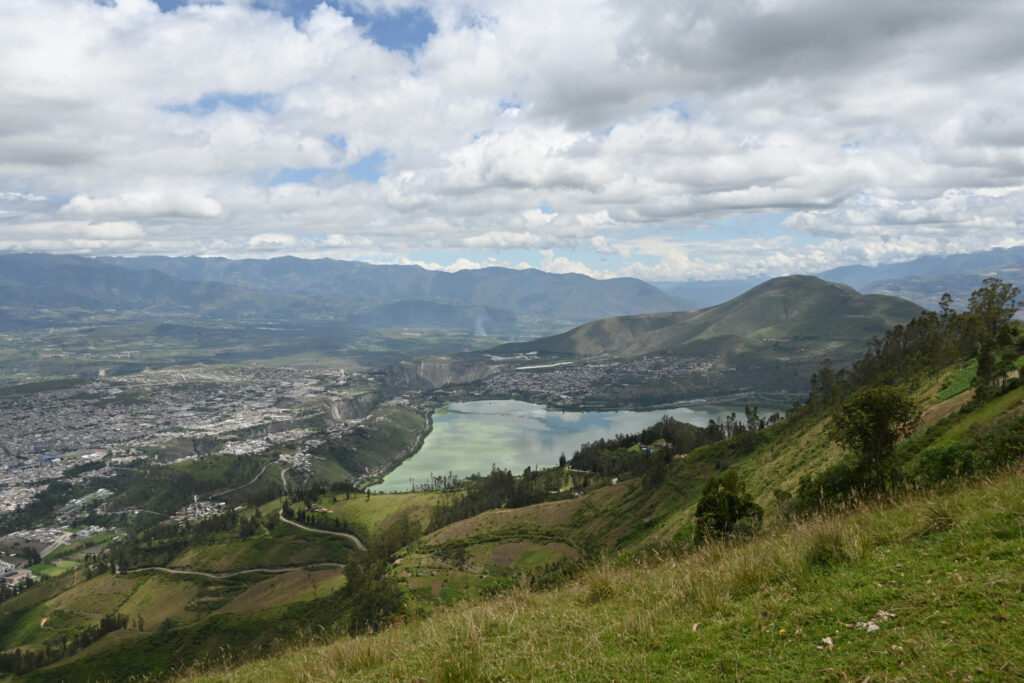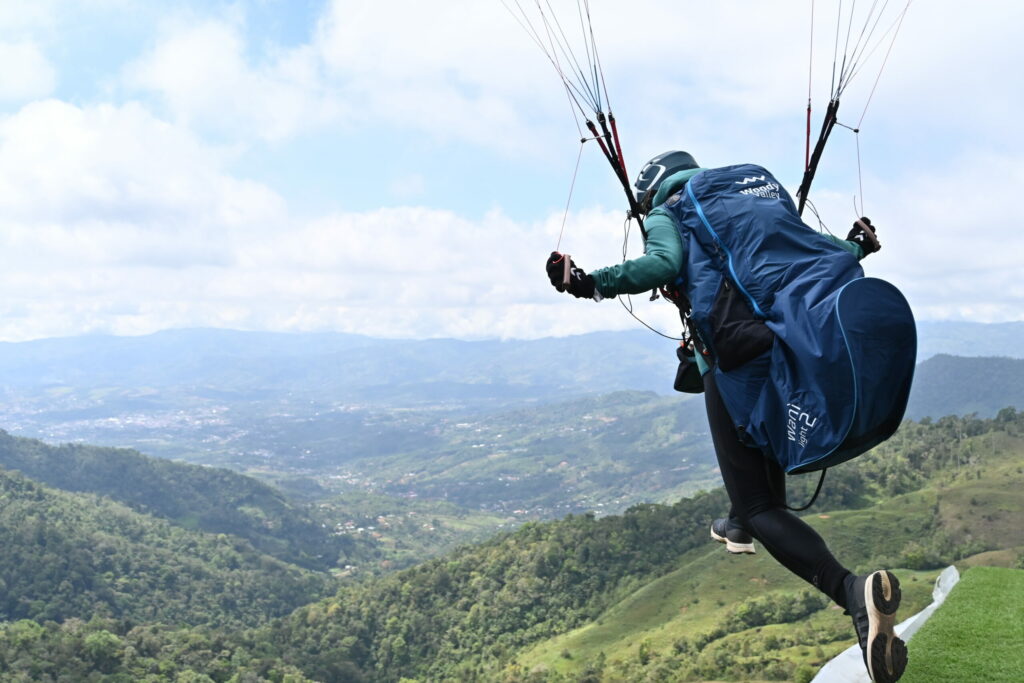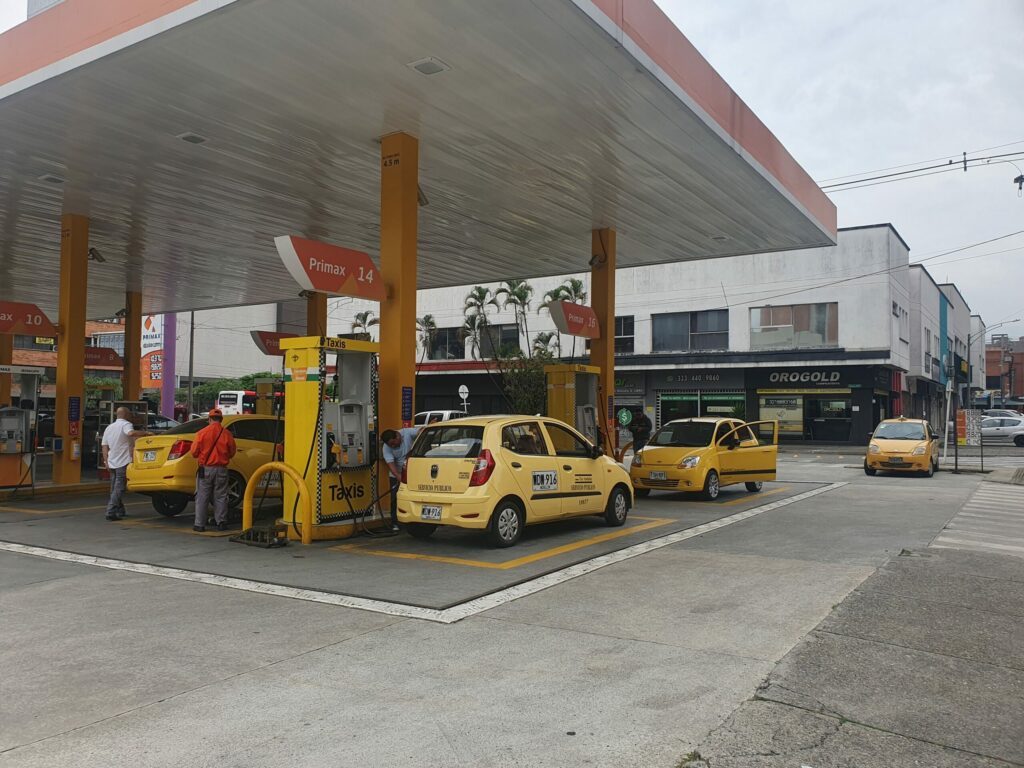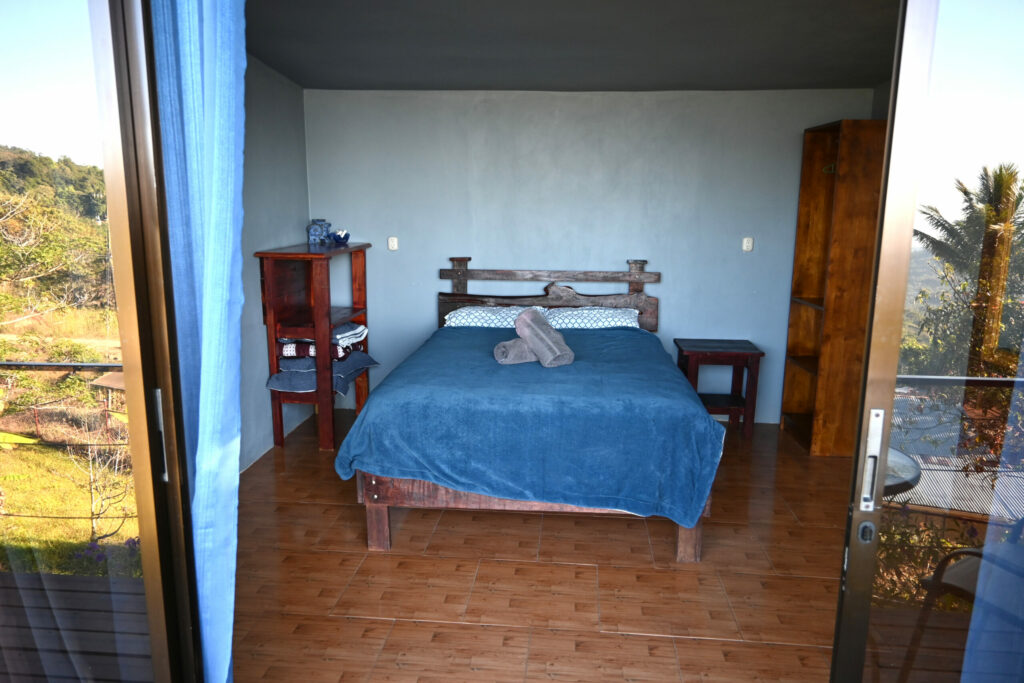With this last post on our blog, we want to wrap up our South America trip for you and us. We want to recap and share some insights and highlights.
Thank you again for being with us on this trip!
Table of Contents
Route
Panama 🇵🇦 – Costa Rica 🇨🇷 – Panama 🇵🇦 – Colombia 🇨🇴 – Ecuador 🇪🇨 – Colombia 🇨🇴 – Panama 🇵🇦. Four countries in five months. Some people said that’s not a lot, but for us, it was just the right amount. In times of climate change, more travelers than we expected were on airplanes every other week, but that’s not for us. We traveled slowly, took our time, and stayed at places we liked.
We haven’t had a fixed route. In retrospect, it was primarily impacted by two things. For once, the initially canceled and then made up for San Blas sailing trip. Second, paragliding spots. The latter also had the effect that we mostly stayed off common tourist routes and were surrounded by locals more often than not. Great!
Safety considerations had a minor impact on the route we took. We avoided some known criminal regions/cities and didn’t use overnight buses in most countries (even though it would probably have been ok). In general, we felt pretty safe across the whole trip. Of course, there were some situations that made us feel uneasy. Nothing was stolen from us (or worse), though, and we even got back things we lost. On the flip side, we heard some concerning stories from other travelers — not too many though.
Highlights
It’s impossible to do this topic justice and is obviously very subjective, but here are some of our highlights:
- Jardín (Colombia): a cute and picturesque mountain town with traditional architecture and lifestyle and interesting cross-country paragliding opportunities (even though it is not known for that)
- Ibarra (Ecuador): just planned as a stop-over, Ibarra blew us away with its stunning views, interesting paragliding, and friendly paragliding community
- Crucita (Ecuador): the city itself is not very interesting but it provided fun and stress-free coastal paragliding with landings at the beach next to our hostel
- Cotopaxi (Ecuador): standing in thin air at 5000 meters next to a glacier on an active volcano throwing up plumes of smoke was a very special experience
- Chicamocha Cañon (Colombia): a remote and beautiful region with stunning views from high above the canyon, awesome paragliding, and a welcoming community
- San Blas Islands (Panama): Caribbean islands like straight out of your dreams with a stunning underwater world
We also did a wonderful trip to the Amazon and visited many other notable places, but what set the highlights above apart is that they widely exceeded our initial expectations.

Paragliding
Even though we had to carry our equipment with us, making paragliding an essential part of the trip really paid off for us. It had many positive effects:
- First of all, we had a lot of fun flying at a variety of different sites
- This way we also gained lots of experience with different terrain and conditions and collected lots of airtime
- We got in touch with local pilots, which was nice and allowed us to practice our Spanish
- As mentioned above, because we largely planned our route based on paragliding spots, we got off the beaten tourist/backpacking path
- We could stay at places for longer and get into a (paragliding) routine (there would have been other ways, of course)
Overall, we expected to have more and easier conditions for doing long-distance cross-country flights. Getting into the air and flying safely (finding safe landing spots etc.), was easier than expected, but the weather conditions weren’t. Even many locals mentioned that conditions were way worse than usual at the respective time of the year. In our paragliding posts you can read more about our experience but I think it is fair to say that we weren’t able to test the full potential of many sites.

One interesting factor is that weather forecasts are unreliable to the point you don’t even bother looking at them. So instead, we looked out of the window every morning. And even that wasn’t reliable because the weather changed quickly. So, in particular in Roldanillo, we often went up even when the takeoff was still covered in clouds. With a bit of luck, it cleared up and we could fly. Otherwise, we stayed up for some hours and went down by bus again.
What was really great was the variety of spots we flew in. From high mountains to low coastal ridges, thermal to dynamic lift, cross-country to soaring, and mountain- to flatland-flying. This really kept it interesting. On top, we often sprinkled in some acrobatics. My SAT spiral is really solid by now 🙂
Getting Around
We mainly used overland buses to get around and spent long hours on them. Most of the time, heading to a bus terminal looking for a bus in the right direction worked well and we rarely had to wait long. It’s all a bit chaotic but we got used to it.
Of course, not everything went as we hoped. Sometimes we got to a different terminal than we expected or the drive took longer than we anticipated. Sometimes we stopped right after departing for an hour-long break. On the other hand, they often didn’t stop for many hours at a time with no functional toilet on board (one time we sat in a bus for 9h without a break!). Somehow we also got better at dealing with that.
In cities, we either used public transport, taxis, or Uber. The latter was available in most larger cities and we generally preferred it over taxis because the cars were in better condition and we would know the price upfront.

In addition to our flights to and from South America, we did two additional flights we initially wanted to avoid. First, to get from Panama to Colombia because of the canceled sailing trip (there is no overland passage available), and then back from Ecuador to Colombia when we made up for it (and it was really worth it).
Crossing Borders
As Germans, we didn’t need any Visas. Crossing borders sometimes took a bit of time but usually went smoothly. The only thing we’ve stumbled upon once was the requirement to have an onward (flight) ticket when entering a country. The airline in Panama didn’t want to let us check in to our plane in Panama for our flight to Colombia. In the end, we bought an onward ticket via Expedia.com that we canceled again after arrival in Colombia.
Accommodation
We stayed in a mix of bed and breakfasts, hostels, and hotels. We usually targeted accommodation at the lower end of the price spectrum and mostly stayed in private rooms. Toward the end of the journey, we tried to do ourselves a treat by paying a bit more than on average but we had a hard time finding something that had a tangible higher level of comfort without paying absurd prices.
Most accommodations looked better online than in reality. We got the impression that even when someone put love and energy into a place initially, there often wasn’t much done in terms of maintenance. So we frequently encountered moldy walls and worn-out furniture. Besides a few places and contrary to our expectations, though, there weren’t too many bugs or insects around. Only once, Katy discovered a line of bites on her leg and two times we found a cockroach — luckily dead, but where there is one…

All in all, we didn’t mind much and were happy with our accommodations, in particular when they were in a nice location and with friendly people around. Only towards the end of the trip, when our energy levels dropped a bit, we got a bit more picky.
One more thing to mention was the showers. I guess ⅓ of the time we had no hot water at all, ¼ was hot water from the tap and the rest were shower heads that doubled as heaters, with the wiring running next to the water. We got used to it but are happy we never got a shock!
Food
We haven’t had many ideas and expectations about the local kitchen. Yet, we were rather disappointed. In all four countries, they had many fried dishes (e.g. Empanadas, Patacones, french fries), ate lots of meat (in Colombia they even made fun of us when we asked for something vegetarian), put a lot of sugar into everything (in Panamá and Colombia even cheese buns or Arepas were sweet) and at bakeries, most things where white and fluffy without much character.
What we did like a lot, however, were the juices, smoothies, and lemonades (with mint), often mixed with slush ice. Also, (exotic) fresh fruits, avocados, and limes were always easy to get.
Overall, we liked the food in Costa Rica and Ecuador the most. They had more variations than meat, rice, and Patacones. Like the Costa Rican dish Casado which included a salad, sweat plantain (yummy), salted vegetables (instead of meat), and salsa.
Katy also developed a taste for everything with cilantro (mostly salsa, like Pico de Gallo, or Gallo Pinto) and culantro (a variation of cilantro but stronger). In Ecuador, they had a vegetarian dish (Locro de papa) and occasionally served Quinoa. And we found some better bakeries that offered things made of corn, garlic bread, and chocolate as well as crispy savory buns.
Expenses
Below you find our expenses per month, with the flights kept separate to make it more comparable. You can see quite well that Panama and in particular Costa Rica are relatively expensive, Colombia is the cheapest and Ecuador was somewhere in the middle of the pack. It’s not completely accurate, of course, because of the different kinds of activities and tours we did.
In total, we are quite happy with how it turned out. If you add up all expenses we would have had in Germany, we wouldn’t be that far off (if you ignore the loss of income).
Not included:
- Travel insurance: 51 € / month
- Satellite tracker subscription: 15 € / month
| Month | Expenses | Flights | Total |
|---|---|---|---|
| Germany → Panama | 1.076 € | ← | |
| 24.01. – 23.02. (🇵🇦 & 🇨🇷) | 3.144 € | 238 € | 3382 € |
| 24.02. – 23.03. (🇨🇴) | 1.560 € | ← | |
| 24.03. – 23.04. (🇪🇨) | 2.809 € | ← | |
| 24.04. – 23.05. (🇪🇨 & 🇨🇴) | 2.605 € | 318 € | 2923 € |
| 24.05. – 13.06. (🇨🇴 & 🇵🇦) | 2.640 € | ← | |
| Panama → Germany | 983 € | ← | |
| Total | 12.758 € | 2.615 € | 15.373 € |
| / Person / Month | 1.276 € | 261 € | 1.537 € |
Equipment
»You’ve got a lot of luggage with you«
»Most of it is paragliding equipment«
»Wow, you are traveling light!«
That was a conversation we had quite a few times. And it’s true, most space in our backpack was taken up by our paragliding harness and wing. As mentioned above, we were happy to have it with us, though.
We also weren’t missing anything important in our luggage. Maybe the only annoying thing was that my short trousers doubled as swimwear. So I couldn’t wear them after swimming. The warm clothes like our Puffy jackets weren’t utilized a ton but were still necessary when flying in the mountains and when going to the Cotopaxi volcano (there we have basically worn all our clothes).
With our clothes, primarily made out of Merino wool, we were very happy. They held up quite well and we didn’t need to wash them as much. One problem was how to wash them, though. They don’t like high temperatures or being tumble dried. Since we often didn’t trust our accommodation with following our (Spanish) instructions, we washed them by hand more often than we would have liked.

The Merino wool shoes also worked well, even during long days in hot and humid weather didn’t start to smell too bad. They also provided enough support for light hikes.
As described before, we had a bit of an electronic fallout (partially self-inflicted). For the laptop, we were still very happy to have it, mainly for sorting through our pictures while traveling and writing this blog. Two things we could have invested a bit more money into were power banks (the surface of mine peeled off but kept working) and power adapters (we bought really cheap ones in Panama, but with all the worn-out plugs we often had connection issues).
One thing we bought very late in our preparation was our water bottles/filters. This spared us from buying and carrying plastic water bottles all the time. While the taste wasn’t great at all times (depending on the water and how often we cleaned them), it was still very convenient and we would definitely take them with us again.
For showering and shaving, we’ve got solid soap with us. It lasted just long enough for our (shortened) trip. Worked out great and there were fewer things that could leak. When possible, we let them dry before packing, otherwise they went into a sealed plastic bag. Our ultra-light towels we didn’t use a lot since our accommodations mostly provided towels but (a) good that they didn’t weigh much and (b) when we used them, they worked well.
Overall, we were really happy with what we had with us!
Speaking Spanish
We started learning Spanish already at home with the app Pimsleur and a bit of Duolingo. This gave us a good base to build on. In the beginning, we were still quite often using translator apps for conversations or when we wanted to ask something specific, later we needed it less and less.
The 10 hours of Spanish lessons we did in Jardín were a great addition. Especially for learning about grammar and tenses. We usually still spoke about something in the present tense and didn’t get to the level of properly using different ones, but it helped a lot in understanding others.
I remember how we have been at an accommodation in Costa Rica where a grandma wanted to make conversation. She spoke slowly and used a lot of gestures and facial expressions, which was extremely helpful. At this time we didn’t even know how to say “from which country are you” or “from where are you coming“. Later, we were able to mostly understand accommodation, city, or flying site instructions and, for example, what our guide told us about Cotopaxi Park.
Our speaking skills are unfortunately not quite as good but it was enough to have little conversations.
Blogging
While traveling, we got into a rhythm of taking photos and notes and turned them into blog posts when staying in accommodations. That meant sorting through the pictures, editing them (mostly by aligning them properly), one of us formulating the text, the other one revising it, putting in the photos, and sending it off. As you can imagine, this was quite a lot of work and took us many hours overall.
However, we are very happy we did it. It helped us to process what we’ve experienced, allowed us to showcase the pictures we’ve taken, and let family, friends, and everyone else who was interested participate. As a side effect, we (probably) improved our English writing and had something “to get done” (we are just not good at doing nothing).
One other less positive side effect (that we didn’t anticipate) was that most people at home knew what was going on, so they didn’t ask as much and there were fewer things to share personally. But hey, at least they could tell us what was going on at home 🙂
